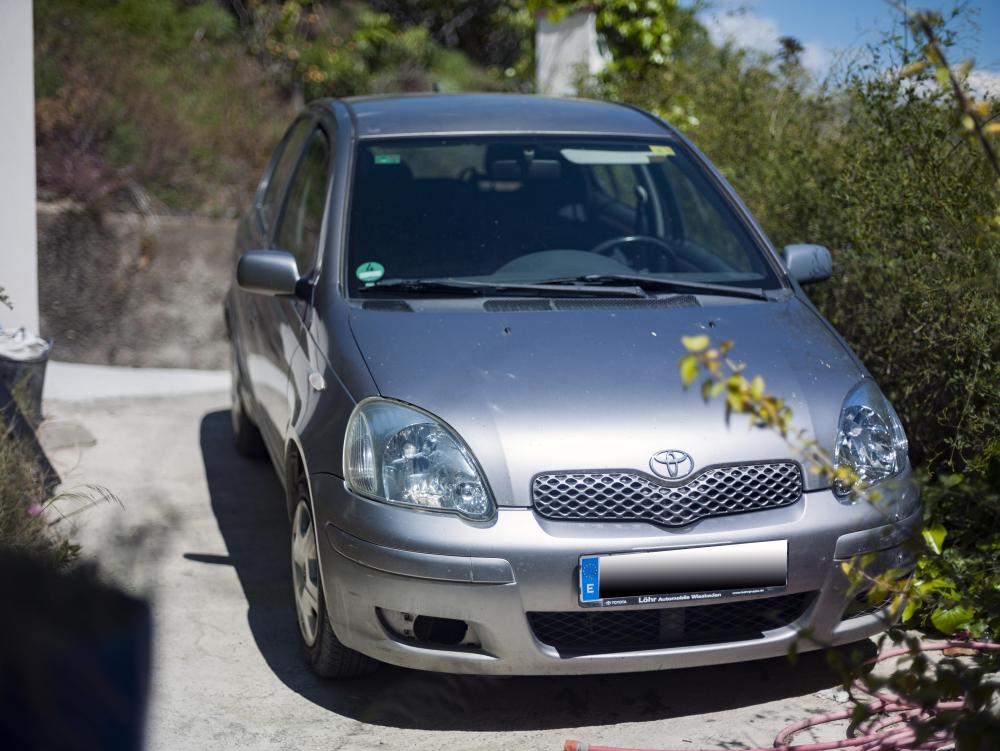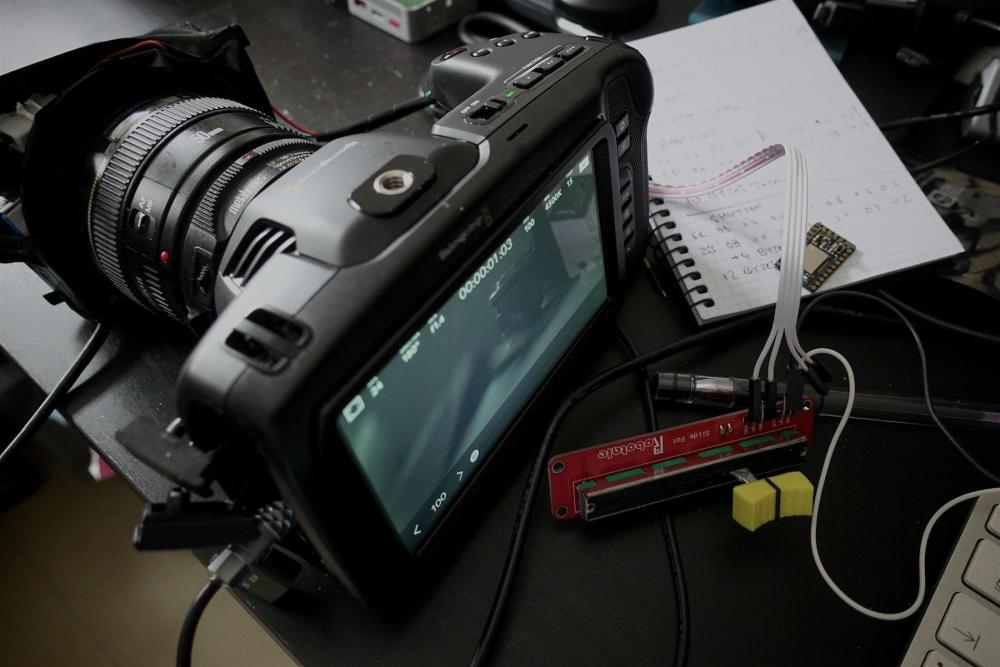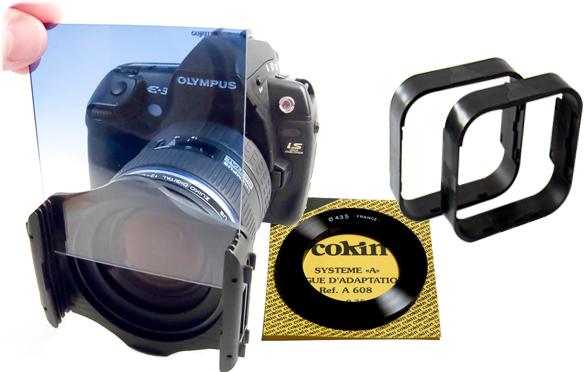Leaderboard
Popular Content
Showing content with the highest reputation on 04/12/2019 in all areas
-
2x anamorphic essentially 1.5x and 1.33x
Bold and 2 others reacted to Caleb Genheimer for a topic
If you’re delivering to cinema, it hardly matters. Most festivals still ask for 2K DCPs or even Blu-Ray. On a good cinema projector, a 2K DCP looks exceptional if you master it properly. I’ve been shooting 2X for almost a decade, before there were affordable monitors, 4K/high DR DSLRs, or single focus solutions. Composition rules apply even if the image is squashed. Wether you crop the sides or not, stretch 2X or 1.5X, the vertical lines of resolution remain the same. Perceived resolution is a funny thing. It’s infinitely more important to get a sharp scope and a taking lens that works well with it... and then to nail your focus. I prefer a 2X scope for the look, and the potential inconveniences are easily solved. The single most helpful tool with any anamorphic is a good monitor that can desqueeze and crop your image. Do yourself a favor and grab a SmallHD that runs the latest firmware. It’ll desqueeze and crop to any configuration. Anamorphic is just something you have to jump into and learn for yourself. It’s comparatively easy to do these days. Pick a scope and start experimenting, learn your rig and adjust your setup as you encounter things you want to improve.3 points -

My Prototype Electronic Variable ND Filter
heart0less and one other reacted to BTM_Pix for a topic
It is the same tehcnology that is in the Aputure DEC electronic ND. So with regard to price, take the retail price of that unit Take off the VAT Take off the sellers margin Take off the shipping. Take off the manufacturer's margin. Take off the hard case. Take off the control grip with its processor, battery and screen. Take off the control unit with its two lens mounts, processor and screen. Take off the mounting brackets amd cables. What you are left with is the piece of the electronically controllable glass and even then you can lose the cost of the frame it sits in. You can probably do the sums of how inexpensive this can be as a DIY project.2 points -
Don't worry, once gimbal technology has matured and all gimbals look the same and there's no point upgrading they'll release the first auto-balancing ones and everyone will have to upgrade all over again!2 points
-
The initial prototype was about as ergonomic as carrying a plane window around with you.2 points
-
when can we pick up our prototypes for betatesting ? ? you probably going to need a large sample batch to statically minimize the mean absolute deviation within specified control limits right ? ?2 points
-
2 points
-

My Prototype Electronic Variable ND Filter
heart0less and one other reacted to BTM_Pix for a topic
Stop bumping it you buggers, I'm working on 50 different things as it is without being guilt tripped that I haven't finished this one I'll put up a pic of a new iteration of it next week hopefully. It will of course be in an elecrtic blue case as I still haven't changed that spool on the printer.2 points -
Zoom F6 - game changer?
SR and one other reacted to UncleBobsPhotography for a topic
They also changed it to using floating point instead of integer values. For those not familiar with computer science, a floating point is a number which is divided into 2 parts. The one part has a certain amount of bits to represent "how many zeros" there is in the number (or the exponent), while the rest of the bits are used to represent a certain number of decimals. An example: The number 1234567890 would usually be represented just as it is. In floating point it could be represented by 1.23456*10^9 by only storing the 7 first digit and the exponent 9. If they use 24 bits to represent the precision and 8 bits to represent the exponent, they will get the same precision as with normal 24 bit recording, but they would get the same precision whether the number was small or large and they would get a much larger value range. For more info: https://en.wikipedia.org/wiki/Single-precision_floating-point_format How well using floating point numbers works in reality is a whole other matter, and the only way to find out is to test it.2 points -

Davinci Resolve 16
Mako Sports and one other reacted to DanielVranic for a topic
Node based workflows are superior to layers and lumetri by a long shot. That feature is one of the biggest and best that DaVinci offers. I used to think otherwise when I was using Adobe alot, but I can not work any other way.2 points -
Live Focus Video from Samsung - a computational bokeh for video!
ntblowz reacted to no_connection for a topic
The useful feature to take out from that would be automatic keying. Or if you want to vlog but don't want things showing in the background.1 point -
We'll be still pondering why Samsung can do stuff like that but still haven't made an NX2 probably.1 point
-
Zoom F6 - game changer?
SR reacted to KnightsFan for a topic
@SR It's absolutely a big deal, but primarily for non-pros. I believe what @kye is saying is that Zoom didn't do anything particularly difficult--it's not like they completely redesigned how the circuitry works. It's similar to the dual channel recording feature many recorders have had for years, except that it merges the two files automatically into a 32 bit file, instead of giving you two 24 bit files that you can manually splice if you so desire. But it's absolutely a useful feature, especially for one man bands who don't have enough eyes to watch the camera and the audio meters at the same time, or for ultra low budget projects (like mine) who employ non-pros without much experience. The dynamic range of the audio file should increase dramatically. 32 bit 48kHz is exactly twice the file size of 16 bit 48kHz, not including the negligibly small amount for metadata.1 point -
Like I said - fairly sure it was a stupid idea haha.1 point
-
Davinci Resolve 16
newfoundmass reacted to MeanRevert for a topic
That's how I learned Resolve..watching Casey Faris.1 point -

My Prototype Electronic Variable ND Filter
heart0less reacted to BTM_Pix for a topic
If you put 48v through it you'd be picking shards of glass out of the wall for a while It only needs 3v through it to reach full reduction and this is supplied by the controller which itself is powered by a small lipo or 3 AA batteries.1 point -
Its actually really simple to vary the amount of ND just by changing the voltage that you feed to it from the controller. That control can be done in numerous ways such as with switches on the controller for defined steps, a pot/fader for absolute position control or remotely by bluetooth. I've been having some thoughts this morning regarding this development and whether I currently have the bandwidth to commercialise it in the nearish future. The short answer is I probably don't in terms of how I would want to do it with a much larger filter, sourcing different glass and everything else manufacturing wise that is involved in a fully commercial product. It doesn't mean I won't do just not right now but I was wondering whether there would be any interest in a build-along thread for people to make their own? I have had a re-think about a controller that would be more suitable for a project version rather than a commercial one and I would be provide you with the code and how to make it amd how you could enhance it. The parts will be inexpensive and readily available and the collaboration might be fun. Would this be something anyone would be interested in?1 point
-
You should join the unofficial group on Facebook. You’ll see production shots of their cameras. These aren’t being used by hobbiest. The Kinefinity has pro features: modules, SDI, swappable mounts, proper SSD support, wireless lens and video streaming, more RAW and ProRes codec options. The Zcam lacks these features and is priced accordingly. Kinefinity has never priced their cameras for the low-end market. You also have to piece together all the things to build your camera whereas Kinefinity has packages ready to go.1 point
-

Fast Fuji Glass
frontfocus reacted to MrSMW for a topic
As above. We are not talking 1990's volume zoom's here, - no one will hear any Fuji lens focusing! Camera clicks, yes and that's why I only use XH1 and X100f now for stills (and XT3 for video). Off camera audio every time.1 point -
Only film things out the window... boom - solved!1 point
-
Can’t believe I miss this thread! i was on a plane recently and they have it built in on their window, I was pleasantly surprised and thinking how come no one make this for camera, and bam this thread pop up A9596483-8556-4081-90D3-4BB76B0CD7CC.mov1 point
-
haha I see you're done, your coming clientele won't leave your ankles : -)1 point
-
1 point
-
Chronos 2.1 low cost high speed camera
webrunner5 reacted to Ed_David for a topic
just the youtube web version - yea it's still really bad, but if you look at what's on youtube, I'm just trying to help them - help the little guy1 point -
Agree that they need to optimize the Variable ND adapter. The drop-in filter does not seem to be super secure and I don't have a lot of trust that it's keeping any dust away from my sensor. With that said, having a variable ND filter in the adapter is brilliant and truly a game changer for quick changes. But, would much rather have it in the body and electronically controlled like the FS5 - all ND filters should be like this from now on. The EOS R is overall pretty disappointing, especially after playing around with the S1 for a few days. It really does feel like the first real professional mirrorless camera I've used that is not called a GH5.1 point
-
NAB'19 -- where's RED or where's still RED ONE when NAB'19 is out there?
webrunner5 reacted to thebrothersthre3 for a topic
Hot lights are pretty cheap tho! Got a 1k for like $100. Just saw an Arri 6k HMI for $1000. Have to be able to power it though lol1 point -
The tragic part is that the lens doesn't look as good when you compare it to medium format, and for 4300$ you can buy medium format. This is a mamiya 80 1.9 (200$ lens) on a 1500$ Phase one Df with a P45+ back (48x36mm sensor). The bokeh isn't swirley in the corners, equivalent 50mm 1.3,and this lens covers 6x7 (andrewwww put this on your gfx with a speedbooster)1 point
-
It started off here But I've started to look at it again recently as a standalone (its controlled be a fader here for example) The idea being that it will be in a square filter holder type system like the Cokin (rather than the cardboard and insulation tape seen in it current incarnation !) with the electronics package in the side. I have found a pretty small microcontroller and screen option that makes it viable to be in a compact standalone form factor but it still has Bluetooth LE/wifi to be remoted from one of my other 849 different controller prototypes that I'm currently also working on Being able to control it from one of my camera controllers offers up the option for interesting functionality such as automatic ND adjustment tracking so you can maintain consistent exposure when changing aperture/shutter/ISO.1 point
-
I definitely will, if it has 10bit and some kind of log, 100%! With a P4K and a Sharp 8K can have a super small setup, with 1/3 of the money the C200 costs! and you can shoot raw, 8K, multi cam - like 3 4K cams, or even more for 1080p delivery, have great in camera stabilization (which I assume the 8K will), interchangeable lenses, a lot more formats and codecs to choose from, both cameras in their most minimal rigging can be a lot smaller and lighter, e.t.c If it is close to 1999...if it is more than 2999, it can break the deal!1 point
-
4K wide 160fps mode coming in new firmware for the E2.1 point
-
Panasonic LUMIX G91
webrunner5 reacted to newfoundmass for a topic
He's so eloquent and thoughtful. I'm a fan too!1 point -
Globalmedia Pro - the warnings of the grey market and going cheap is expensive
webrunner5 reacted to Roccovw for a topic
Never buy from Globalmedia Pro No help when you have a problem. No customer service. Avoid them at all costs. Ref order 9398771. Wasted $700 and since my first message to them about the problem they flat ignore me1 point -

NAB 2019 predictions and major talking points - BMPCC 4K Pro anyone?!
hansel reacted to Martin Kuipers for a topic
What a great guy ? love it.1 point -
I love this sort of stuff.1 point
-
Hi everyone! I am still using NX1 as well. Jitter and turning green? I have experienced both. When filming in nature I started noticing that when turning the camera towards greenery, the pic got more magenta-ish when WB was locked. Opposite happens too. This made me realize Samsung had all figured out correctly; if we lock the color on the Kelvin blue-yellow axis, it can still freely move on the tint axis. So it is not completely locked, obviously. The Kelvin is locked, tint is automatic. Very logical of Samsung ? ? . All color is locked when all axes are locked in custom color or presets. Jitter. I had always jitter when editing the H265 footage directly in Sony Vegas Pro, and the jitter even did remain on YouTube. With every camera setting and render settings I used. The jitter went away once I started to use RockyMountains Movie Converter and edited with anything but H265. I am still wondering what is the reason, but probably it has something to do with H265 and how players and NLEs handle it.1 point
-
1 point
-
This is a complete suite of applications that a professional content creator can use, and is given to us for free when buying some of their product's. How amazing is this??!! In my opinion, this fact gives so much value to products like the P4K, that is both unprecedented and even unbelievable!1 point
-

Sony a7 III discussion
foliovision reacted to Laurier for a topic
Except that slog is unworkable internally ,you get color noise and compression artifact all over the place, so If you want to have all the DR that the sensor have to offer you need to record externally . I do a lot of post work and when you start to move things around, it s immediately visible . The youtube argument is a nonsense, because even in cinema your bitrate is limited to 250 Mb/s, it s about having some room in post to get your image where you want it before you compress it again. But my work sometime get screened at festivals so to me it matters. The motion blur look very different as well. The examples you sent me have little motion to them. But yeah, if you shoot cine4 and upload straight to youtube, that make less sense. I disagree with the face tracking comment , I shoot with Batis and it work very well, way better than any focus puller would manage on large format/long lens/large aperture , I do MV and fashion mostly and I can t always know where the model/performer is going to move ( and if it s dancer, I want to let him/her do his/her things). Beside on a shoulder rig you can see both the rear screen and the recorder so you know when it lock in, the screen don t go off if you setup the video signal/trigger properly. You need to go to the menu and force 4k 24fps out then deactivate the internal recording , and activate to control trigger over hdmi. If you leave the default parameter, the screen go black and you loose face tracking.1 point -
I very much doubt that ! I bet you Einstein hasn't just forced an EOS to F mount adapter on to one of his favourite lenses so badly that he had to spend 2 hours cutting it off ! Would Albert have used an EOS to F adapter though? Probably more an E to MC kind of a guy.1 point
-
Sony a7 III discussion
foliovision reacted to Danyyyel for a topic
The difference I think is not being mirrorless but having pdaf on the sensor, which the Sony have while the Pana don't. I remember Nikon saying that they would not use on sensor pdaf oon its Dslr because it could create artifact and that they were not prepared to do any compromise on image quality. I thought it was BS, now I am more incline to believe them. But I still think they will use it in their future mirrorless cameras.1 point -
Sony a7 III discussion
foliovision reacted to Arikhan for a topic
Django, full ACK. When you shoot R&G you simply don't have the time for Sony-Settings-Tiki-Taka plus mostly you never get the chance for a retake. Personally, I'm not so enthusiastic about the A7 iii, as it seems to be the same lack of quality control as many other models: "Stripping"-issues in backlit situations...as mentionned here...third paragraph. Simply look at girls face - unbelievable...TIHS IS A SEVERE ISSUE! OK, for people who don't shoot club/concert or any other backlit scenes, this is not a problem. But as I do it, it's a dealbreaker for me. The Nikon DSLR dinosaurs still have right to live.1 point








